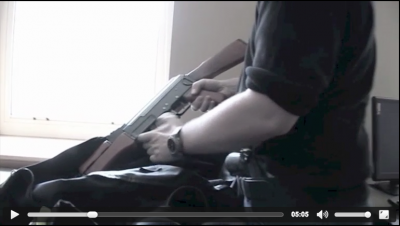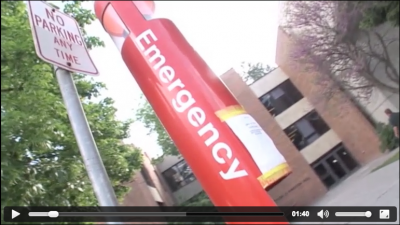This story was originally published in the Mar. 21 issue of Fourth Estate.
Mason recently released a video created by the Center for Personal Protection and Safety (CPPS) that educates students about safety during an active shooter situation.
David Farris, director of Safety and Emergency Management for the Environmental Health and Safety Office, sent an email on Feb. 16 reminding students to prioritize knowledge of campus safety procedures. The video “Shots Fired” was linked in this email.
According to former Chief of Police Eric Heath, who is in the video, “Shots Fired” intends to “teach students, faculty and staff the techniques to survive an active shooter situation on campus.” The video can also be found on Blackboard by visiting the “Active Shooter” tab in MasonLinks on the homepage. Below are highlights from “Shots Fired.”
Mason staff in the video:
- Former Chief of Police Eric Heath
- Linda Harber, vice president of Human Resources and Payroll
- Rose Pascarell, vice president of University Life
The survival mindset
Developing a survival mindset is essential to reacting effectively in any active shooter situation. By convincing yourself that you will survive, you are able to commit to your actions. There are three main components of this mindset:
1. Awareness: If an emergency does occur, take the time to assess the best course of action. Mason’s Environmental Health and Safety Office includes emergency procedures and recourses for students on their webpage, ehs.gmu.edu or visit police.gmu.edu.
2. Preparation: Always be aware of your surroundings, and ask the “what if” questions. Always identify suspicious behavior, escape routes and the easiest way to contact Mason Police or 9-1-1 during an emergency.
3. Rehearsal: Participate in school-wide emergency preparedness drills and initiate peer-to-peer conversations about how you would react in an active shooter event.
Active shooter situations
 When confronted with an active shooter event, it is important to be aware of your surroundings before deciding on the best course of action. Take responsibility for your own personal safety. “This is a collaborative effort; everyone is responsible for ensuring that we have a safe community here,” Harber said.
When confronted with an active shooter event, it is important to be aware of your surroundings before deciding on the best course of action. Take responsibility for your own personal safety. “This is a collaborative effort; everyone is responsible for ensuring that we have a safe community here,” Harber said.
1. Follow your gut: “Report suspicions or uncomfortable behavior to the appropriate campus office,” Pascarell said.
2. When in doubt, assume it was a gunshot: People who have no real-life experience with gun-shots may perceive them as artificial. It is always better to assume the unidentified noise is a gunshot to ensure no time is wasted in getting to safety.
3. Take time to assess the situation: Assess how close the gunshots sounded. If in a room, check the hallway for activity before exiting.
4. Get out: The first priority is to remove yourself and others from the danger zone. If you are able to, exit the building and contact Mason Police immediately. Never assume that others have already called. When calling for help be prepared to give the location of the incident, a description of the shooter and exactly what has happened. Ensure that other people do not enter the danger zone.
If you are outside when you become aware of an active shooter situation or hear gunshots, stay in motion. Find protection and contact Mason Police immediately.
5. Hide out: If you are unable to exit the building safely, find somewhere to hide. Find a room that locks and barricade the door with furniture. If you are with other people, hide in different locations throughout the room and silence all cell phones. If you feel safe doing so, talk quietly and plan strategize how to react if the shooter enters your room.
6. Take out: If you are confronted by the shooter, commit to your actions. Work to maintain your survival mindset. If you are with a group of people, throw things and gang up on the attacker. Communicate and help each other remain calm as you commit to taking out the shooter together.
When dealing with law enforcement
 Police officers are trained to incapacitate any possible threats first. If you are found by a Police team, they will collect information from you and move on. Follow these tips to avoid being perceived as a threat:
Police officers are trained to incapacitate any possible threats first. If you are found by a Police team, they will collect information from you and move on. Follow these tips to avoid being perceived as a threat:
1. Translate information: Give clear descriptions of how many shooters, what kind of weapons they may be utilizing and descriptions of the shooters.
2. Show your hands: If you are hiding when a police team enters, show your hands, get down on the floor and follow instructions.
3. Officers do not know who is a threat: do not point, yell or run up to the police to avoid being mistaken for a threat.
Read more:




